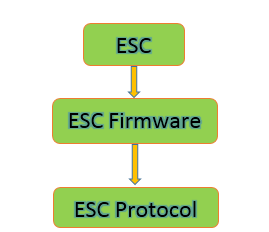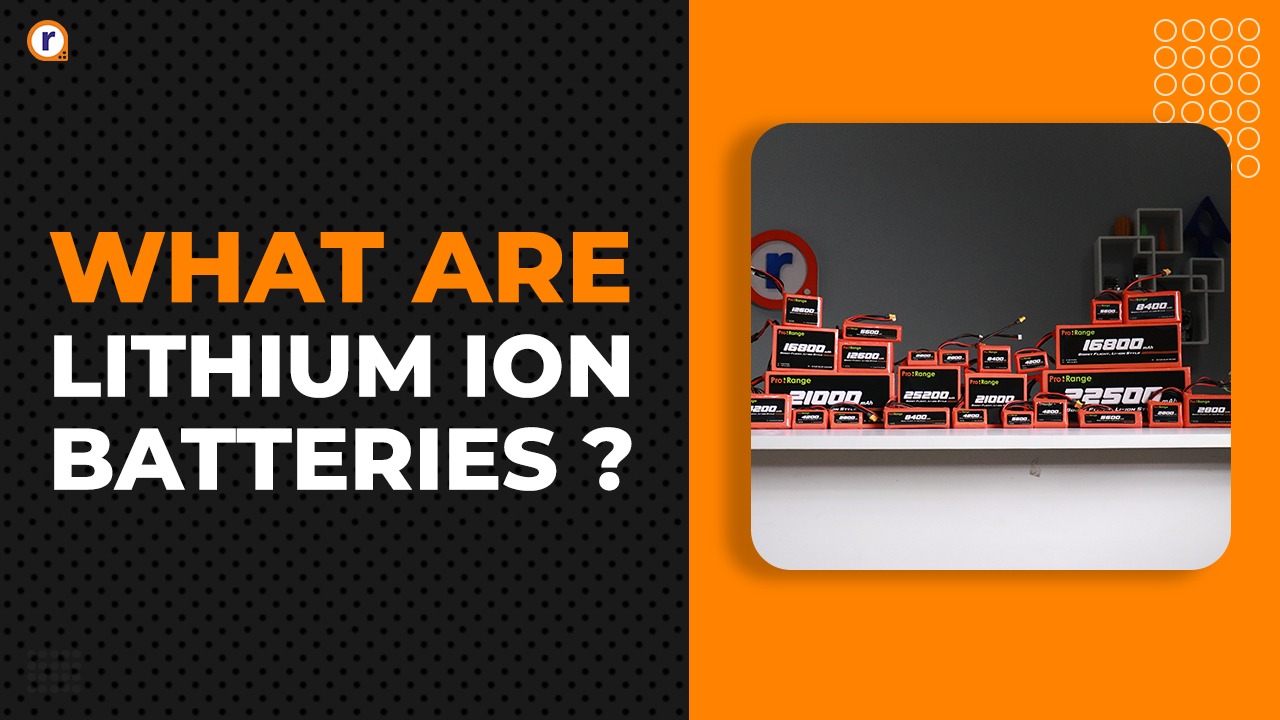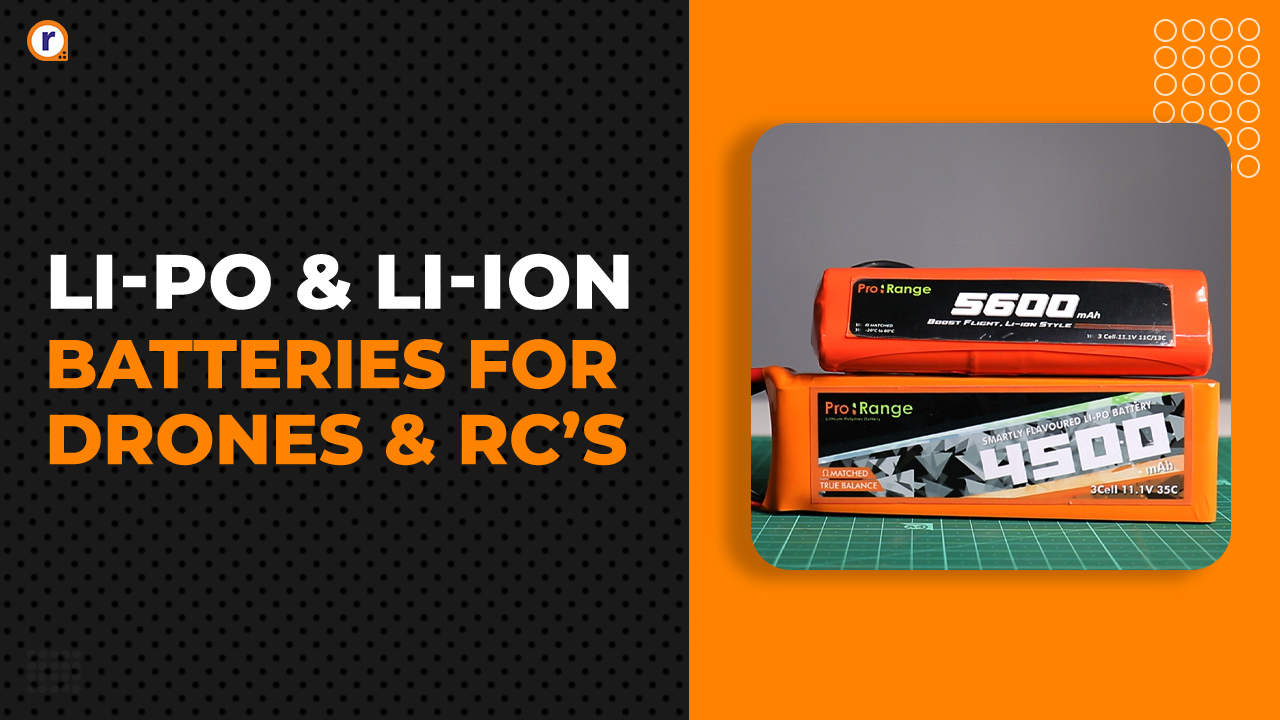What is Oneshot and Multishot in ESC? / Oneshot Vs Multishot ESC / ESC calibration Protocol
Learn about the various ESC Calibration protocols like Oneshot, Multishot, and DShot.

What is ESC?
The ESC (Electronic speed controller) is an electronic circuit that controls and regulates the speed of BLDC (Brushless DC) motor; it provides reversing and breaking of the motor. Basically, it is the speed controller for a BLDC motor. for more ESC's click here

Brief information about Firmware:
ESC firmware is the software running on every ESC, which determines the ESC’s performance. This gives information about which protocols are supported, and what configuration interface can be used. The firmware that an ESC can use is dependent on the hardware. The different types of Firmware are:- BLHeli ESC.
- BLHeli_S ESC.
- SimonK ESC.
- Kiss.
- BLHeli_32.
- Other manufacturer's own software.
Brief information about protocol:
ESC calibration protocol is the “language” that the flight controllers and ESC use to communicate, one of the most basic tasks is to tell how fast the motor should be spinning.Now, what is Oneshot, Multishot, etc.?
The Oneshot, Multishot and Dshot are the ESC calibration protocols. This protocol allows connecting Electronic speed controllers (ESC) to flight controller or Radio receivers i.e. this protocol tells us how we are controlling the speed of BLDC motor and what is its duty cycle for each protocol. This protocol allows transmitter (Remote controllers) to pass the information to ESC.
There are different types of protocol, have a look
- Analog PWM.
- Standard PWM.
- Oneshot125
- Oneshot42
- Multishot
- Dshot (Digital shot).
- Proshot.
A. Analog PWM:
0% duty cycle means STOP and 100% duty cycle means FULL POWER.
B. Standard PWM:
If pulse length is 1ms then STOP and when pulse length is 2ms then FULL POWER. Therefore the maximum frequency is 500Hz. In this protocol, if the signal delay is 2ms then the flight controller will start delaying signal to ESC by 2ms.
C. Oneshot125:
In this protocol, the pulse length is 8 times shorter than standard PWM. If pulse length is 125µs then STOP and if pulse length is 250µs then FULL POWER. The maximum frequency is 4 kHz. For successful calibration and operation flight controller as well as ESC both have to support this protocol.
D. Oneshot42:
This Oneshot ESC is 3 times faster than Oneshot125 with a maximum frequency of 12 kHz and a signal delay of 42µs.
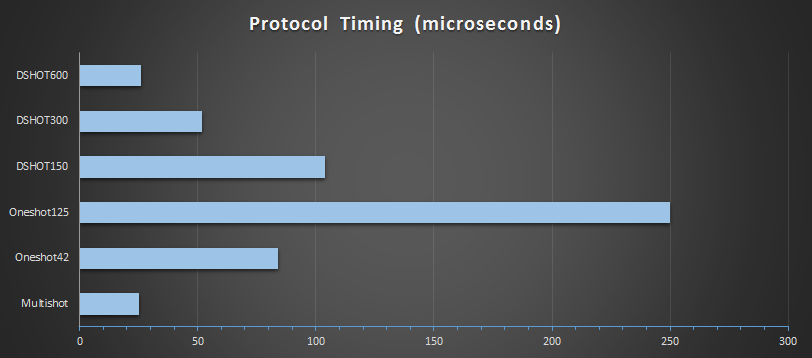
E. Multishot:
This is the fastest ESC protocol among all the above with a maximum frequency of 32 kHz. It is 10 times faster than Oneshot125. This is not a widely supported protocol because of a limited number of Multishot ESCs.
F. Dshot ESC (Digital shot):
Standard PWM, Oneshot125, Oneshot42, and Multishot these are all analog signals. They all rely on the length of the electrical pulse to determine the value being sent.
The Dshot is itself a digital signal so it’s exciting to know that ESC calibration will no longer be necessary. Because of the nature of the digital signal, which is one’s and zero’s, it will also be much more resistant to electrical noise.
All FPV Drone racing kits include FPV, ESC, BLDC motor and radio transmitter.
There are three different Dshot protocol types:
- DShot1200 ESC - 1200Kbits/Sec.
- DShot600 ESC – 600Kbits/Sec.
- DShot300 ESC – 300Kbits/Sec.
- DShot150 ESC – 150Kbits/Sec.
Advantages of Dshot:
- Very high protocol frame frames are supported.
- No need to do any ESC throttle range calibration.
- Clock differences between the ESC and flight controller don’t affect flight.
- All values sent to the ESC are protected with a 4 bit CRC.
G. Proshot:
The Proshot is a hybridization of digital(Dshot) and analog(Oneshot/ Multishot) ESC protocols; which aims to achieve robustness like digital protocol and flexibility in hardware like analog protocols.
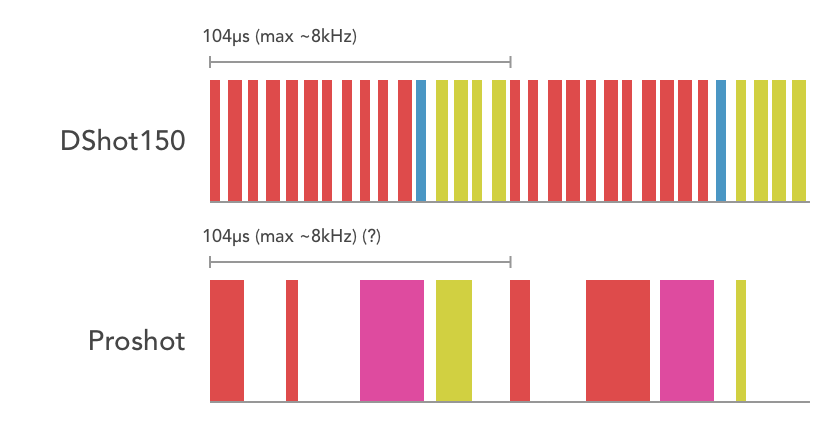
Back to Electronic speed controllers (ESC) Click here! To get to know how to calibrate ESC Click here!


